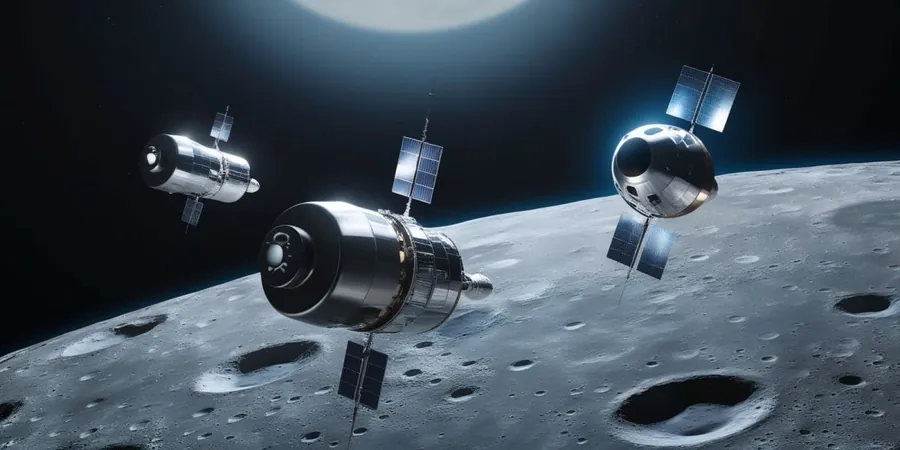
India’s Chandrayaan-2 Takes Evasive Action To Avoid Space Collisions with Korean and American Crafts!
2024-11-22
Author: Wei Ling
Introduction
In a stunning display of cooperation and ingenuity, the Indian Space Research Organisation (ISRO) has recently reported that its Chandrayaan-2 moon orbiter undertook critical maneuvers to evade potential collisions with both Korea's Danuri spacecraft and NASA's Lunar Reconnaissance Orbiter (LRO). This significant event highlights the complexities and challenges of operating within the increasingly crowded lunar environment.
Maneuvers to Avoid Collisions
On September 19, Chandrayaan-2 shifted its orbit to avoid an impending close encounter with Danuri, also known as the Korea Pathfinder Lunar Orbiter (KPLO). A second maneuver on October 1 was required to dodge NASA's LRO, which orbits the Moon in a highly elliptical trajectory at an average altitude of approximately 50 kilometers. The LRO is on a mission to conduct extensive surveys of the lunar surface, aiming to uncover essential resources like water and ice.
Similar Objectives of Lunar Orbits
Meanwhile, the Danuri orbiter and Chandrayaan-2 maintain operating altitudes of around 100 kilometers from the Moon, focusing on similar objectives: mapping the lunar terrain and investigating potential water reservoirs.
Challenges of Collision Avoidance
Remarkably, space agencies worldwide face a unique challenge when it comes to collision avoidance; there is currently no formal protocol governing orbital intersections. Collaboration between agencies is key, and as seen here, close communication between ISRO, NASA, and the Korea Aerospace Research Institute (KARI) is essential to prevent costly mishaps.
Concerns About Near-Collisions
There have been ongoing concerns about near-collisions in space. Recently, ISRO had to perform a maneuver to adjust its Cartosat-2A Earth observation satellite's path to steer clear of a Russian rocket body. Additionally, KARI reported that their Danuri orbiter experienced over 40 potential collision warnings between February 2023 and May 2024.
Daily Monitoring and Strategic Discussions
Daily monitoring is a critical part of these operations, conducted through NASA’s Multimission Automated Deepspace Conjunction Assessment Process (MADCAP). While maneuvering to avoid collisions, spacecraft must consider fuel consumption implications and the temporary suspension of scientific missions, leading to strategic discussions on burden-sharing among agencies.
The Future of Lunar Exploration
As lunar exploration intensifies, the need for international collaboration and advanced tracking technologies becomes ever more vital, ensuring continued progress in our understanding of the Moon and beyond. This series of maneuvers not only salvaged the missions at stake but also emphasizes the importance of working together in this new “space race” climate. What will be the next big maneuver in this exciting frontier? Stay tuned for updates!



 Brasil (PT)
Brasil (PT)
 Canada (EN)
Canada (EN)
 Chile (ES)
Chile (ES)
 España (ES)
España (ES)
 France (FR)
France (FR)
 Hong Kong (EN)
Hong Kong (EN)
 Italia (IT)
Italia (IT)
 日本 (JA)
日本 (JA)
 Magyarország (HU)
Magyarország (HU)
 Norge (NO)
Norge (NO)
 Polska (PL)
Polska (PL)
 Schweiz (DE)
Schweiz (DE)
 Singapore (EN)
Singapore (EN)
 Sverige (SV)
Sverige (SV)
 Suomi (FI)
Suomi (FI)
 Türkiye (TR)
Türkiye (TR)